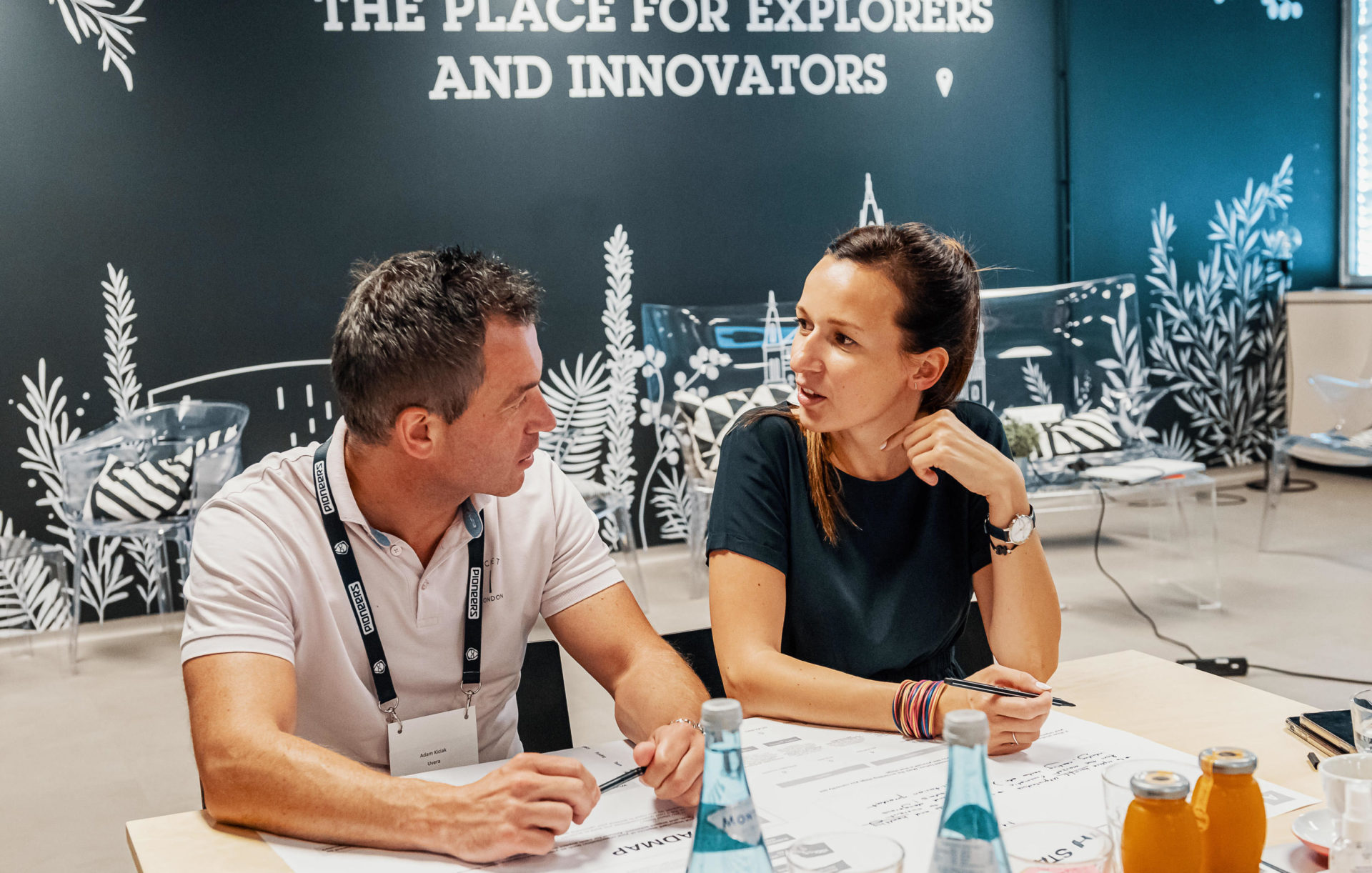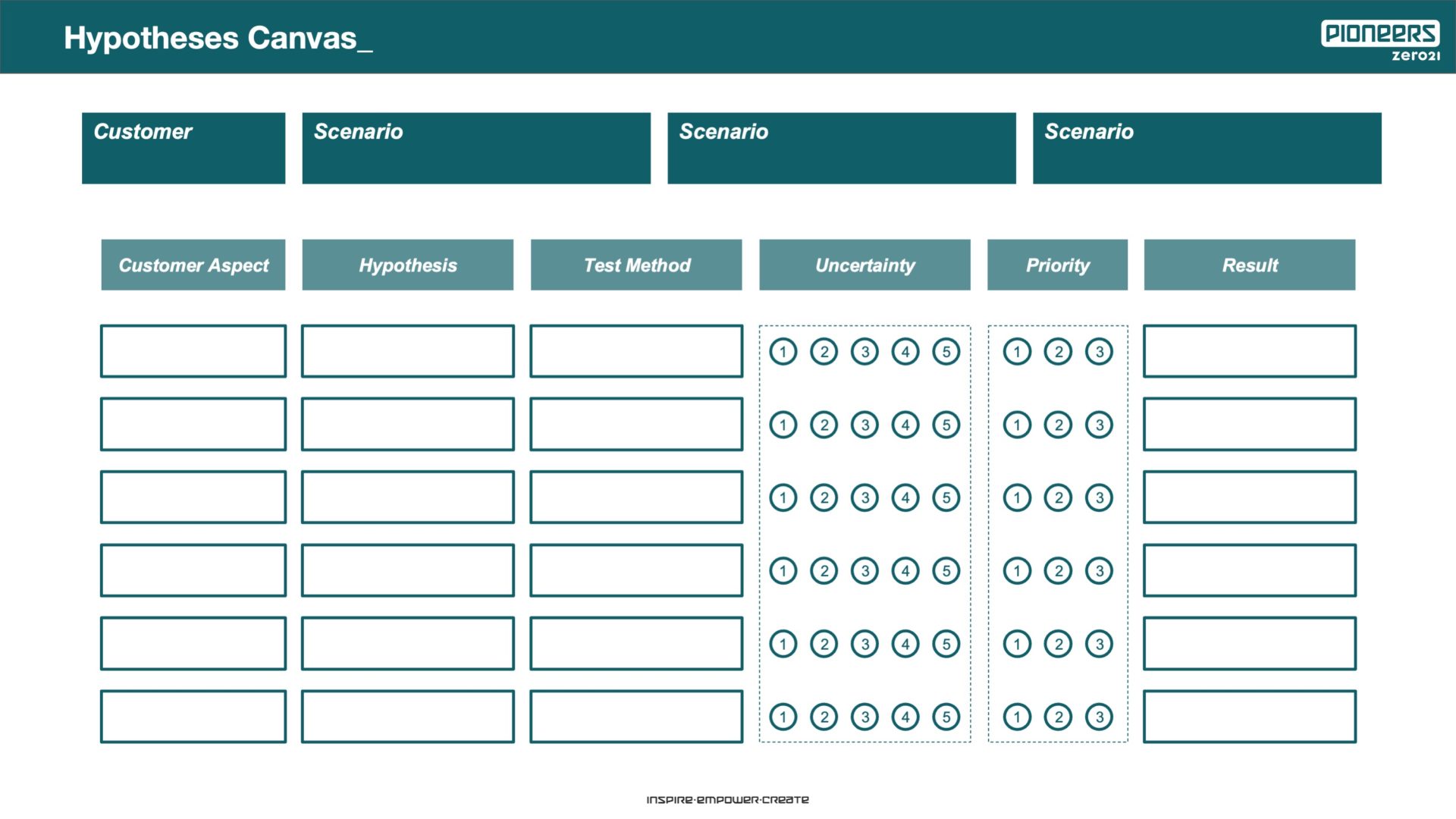
PART 2/2
In Part #1 my colleague @Michael Wlaschitz and I from Pioneers.io looked at how to define a target group and identify the jobs, pains, and gains of our customers. Now it’s time to validate the assumptions made using the following two tools. (You can download all 5 tools for free on the Pioneers.io website HERE.)
Let’s get started.
4) Define key customer hypotheses to validate
Tool
Hypotheses Canvas (by Pioneers)
What it is
The Hypotheses Canvas helps teams to formulate key hypotheses about the customer that need to be validated in order to be sure that the jobs, pains, and gains actually exist.
Why you should use it
So far, following steps 1 to 3, the teams have defined the customer persona as well as jobs, pains, and gains based on their own experience, beliefs, and discussions. Building a solution based on this would carry a big risk that there is actually no market for a solution in this space.
Thus, the Hypotheses Canvas forces teams to question their assumptions and formulate hypotheses that need to be true for a solution to become successful. These hypotheses can be used in the next step to do customer validation experiments and help the teams to focus their research.
How to use it
The Hypotheses Canvas builds on the right side of the Value Proposition canvas. Key Hypotheses should be formulated about each of the three fields: customer jobs, pains, and gains. Therefore, the teams should jointly use the Value Proposition Canvas and Hypotheses Canvas to formulate the most important (max. 15) hypotheses.
Pro-Tip
The concept of hypothesis testing is new to many employees. Thus, again some examples can help to explain the importance. It is essential here to emphasize that any hypothesis needs to fulfill the following three requirements:
- It needs to be able to turn out true or false
- It needs to be actionable/provable
- It needs to specify the customer persona that is analyzed

5) Validate customer hypotheses
Tool
Customer Interviews – Interview Guideline
What it is
Customer interviews are the easiest and most effective method in the early stage of a venture to learn about the target group. 30-45 minute 1-on-1 interviews about the topic at hand open up a lot of new ideas and provide the chance to validate key assumptions made in the steps before.
An interview guideline is a set of questions that helps teams to undertake interviews with a clear goal in mind, – namely validation of the formulated customer hypotheses.
Why you should use it
Interviews are not 100% proof that any later developed solution will be successful (real proof only comes with real customers). Nevertheless, they provide an incredible amount of information that has surely not been considered by the team. In our career working with 30+ teams, there hasn’t been a single one not learning a lot from these conversations.
The interview guideline tool helps the teams to get even more out of the customer talks by providing a clear structure with a focus on validating hypotheses. It also allows the comparison of interviews and makes it easier to find patterns in the different answers.
How to use it
The Interview Guideline directly builds on the Hypotheses Canvas. Formulated hypotheses should be translated into questions that can trigger information to confirm or falsify those hypotheses. Therefore, it is best to use these tools together again.
Pro-Tip
For 30-45 minutes interviews, don’t prepare more than 10 questions in advance. Rather ask questions in between, such as “why” or “can you explain that in more detail”. This helps to deeper understand the customer and the reason for certain statements.

Conclusion
Developing customer-centric, innovative solutions is not an easy task. Many times our own assumptions or beliefs about the customer get in the way. They lead us to develop solutions that do not fulfill any market demand or neglect important needs.
The presented 5-step approach and tools aim to avoid this bias and force teams to do their homework about the customer early on. Each new tool builds on the previous one. Thus the process does not only lead to effective customer analysis but also strong acceptance from the teams. They easily understand the value of each step of the work and ensure a more customer-centric innovation process.
Download the tools + examples for free at our Pioneers Website HERE.
#inspire #empower #create #pioneers #customer #validation #testing #persona #userjourney #valueproposition #digital #product #design
Do you like our customer tools and want to know more about the Pioneers corporate innovation services?
Book a short intro call with @Michael Wlaschitz who will introduce you to the Pioneers offerings.

Michael Wlaschitz
Senior Venture Designer
